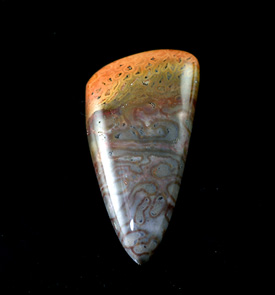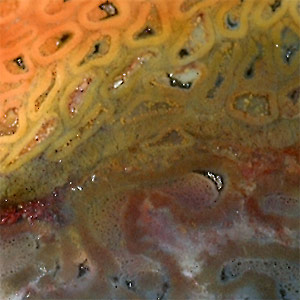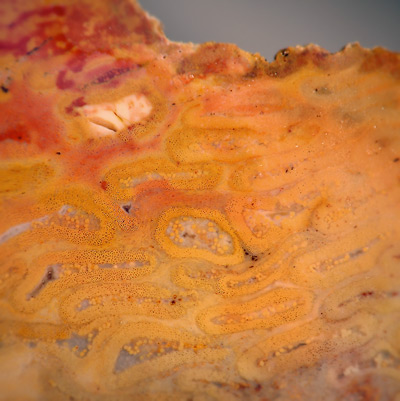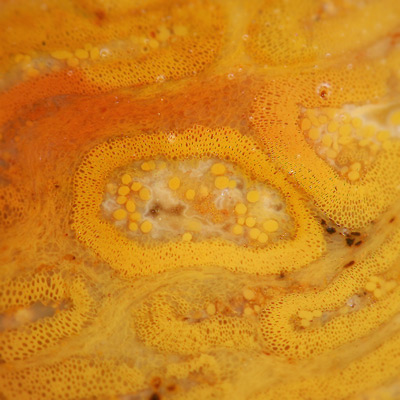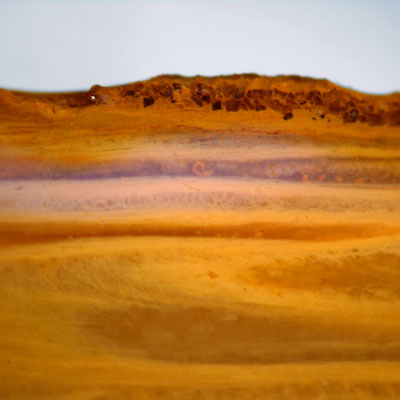| Similar in its formation to the fossilized dino bone, the fern was first buried and then slowly, over time, the cell structure was replaced (and replicated) by silica solutions. Again the coloration is a result of the secondary elements that were in the replacement silica solution. The rough material was a slice taken through the stem of the fern. It is likely from Araguana, Brazil. Probably between 180 million and 200 million years old.
It is amazing how much detail the fossilization process is able to capture. Look closely at the images below for tubular structures in the stock of the fern.
These stones cut by the author.
|


